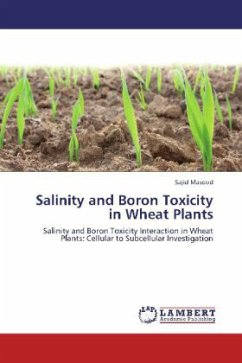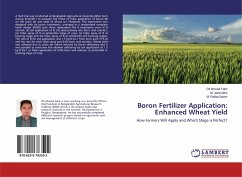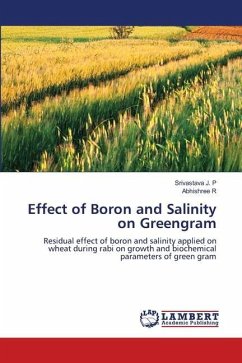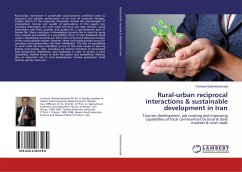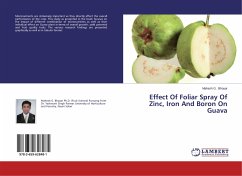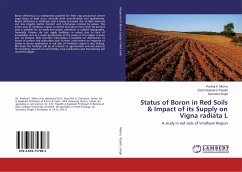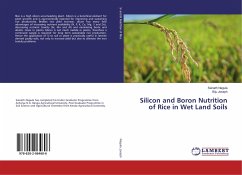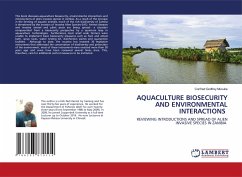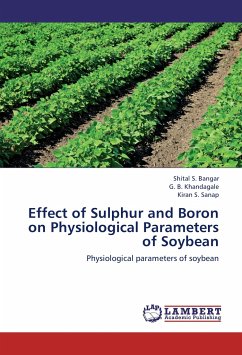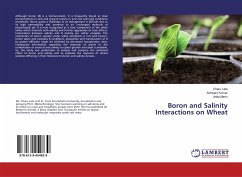
Boron and Salinity Interactions on Wheat
Versandkostenfrei!
Versandfertig in 6-10 Tagen
27,99 €
inkl. MwSt.

PAYBACK Punkte
14 °P sammeln!
Although boron (B) is a micronutrient, it is frequently found at toxic concentrations in soils and ground waters in arid and semi-arid conditions worldwide. Boron poses a challenge as its management is difficult due to its high permeability and presence as an uncharged molecule at physiological pH. B is now recognized as a toxic component of the saline milieu which interacts with salinity and further aggravates its toxic effects. Interactions between salinity and B toxicity are rather complex. The mechanism of boron uptake under saline conditions is not well known. Under saline and excessive B...
Although boron (B) is a micronutrient, it is frequently found at toxic concentrations in soils and ground waters in arid and semi-arid conditions worldwide. Boron poses a challenge as its management is difficult due to its high permeability and presence as an uncharged molecule at physiological pH. B is now recognized as a toxic component of the saline milieu which interacts with salinity and further aggravates its toxic effects. Interactions between salinity and B toxicity are rather complex. The mechanism of boron uptake under saline conditions is not well known. Under saline and excessive B conditions, absorption and translocation of B by passive diffusion might be inhibited by decreased transpiration rates. Inadequate information regarding the response of plants to the combination of excess B and salinity on plant growth and yield is available. So, this study was undertaken to analyze and compare the combined effect of boron and salinity and to evaluate the response of wheat varieties differing in their tolerance to boron and salinity stresses.



